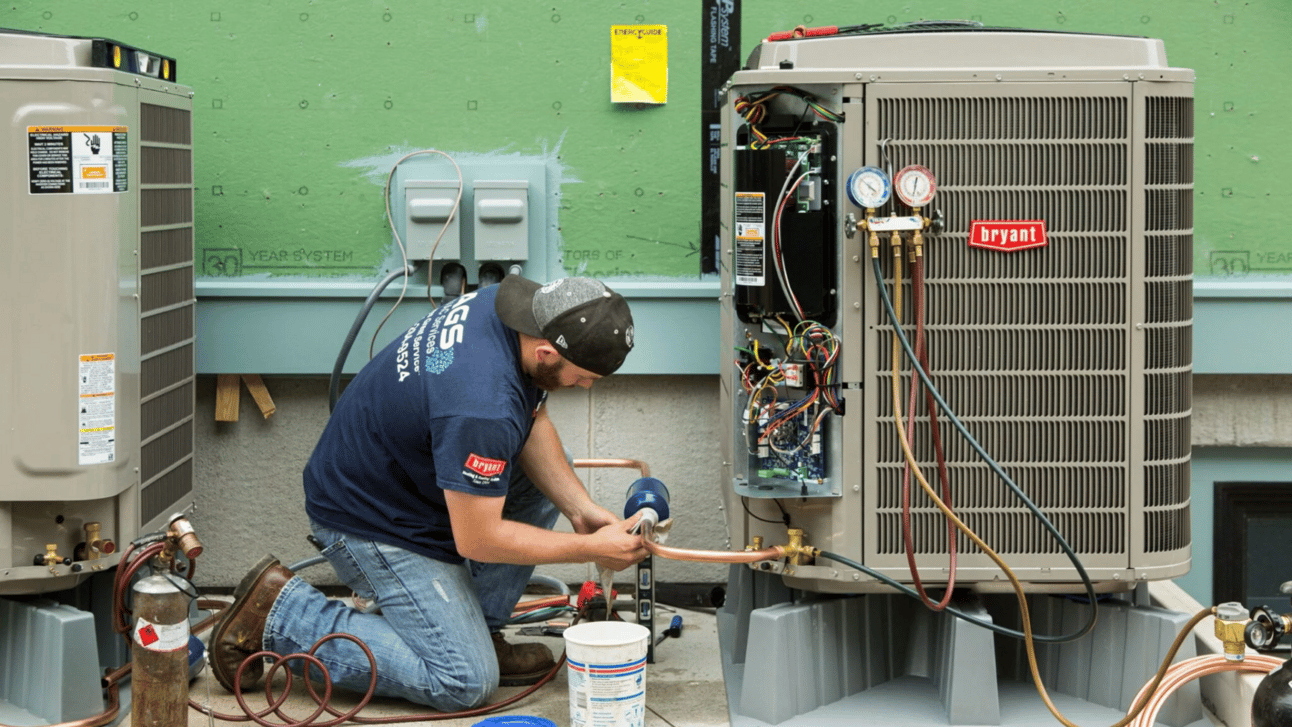The important, but less covered part of the HVAC industry’s labor problem
The lack of people entering the trades is only one part of the problem

Image: My HVAC Price
Here’s something everyone knows: The HVAC industry has a labor issue.
The Bureau of Labor Statistics projects that there will be over 37,000 technician job openings each year until 2032, while around 30 million Americans turn 65 during that same period.
But numbers are just one part of the problem. The less talked about, yet equally, if not more, important part? A growing competency gap.
The big picture: “We don’t have enough people entering the trades, but that’s compounded by an experiential gap, which is a 10x bigger problem,” Tom Casey, a forty-year industry vet, tells me.
-
“As the 65-year-old guys with 40 years of experience retire, who’s gonna mentor the younger people?”
-
The problem, Casey says, is exacerbated by a cultural shift to prioritizing sales over everything else.
“If you go online today, the majority of posts are about selling and flipping. I think private equity, which I have nothing against, is partly driving this culture,” he explains.
-
“There’s a tendency to spend all this time and money on teaching techs how to upsell, and technical training be damned,” he adds.
-
“[Technicians often earn] higher commissions for selling higher efficiency products. Well, the more complex the system, the more technical training is required to properly install, maintain, and service that system. And yet, these guys are not getting that training.”
Why it matters: Priority number one should be doing what’s best for the customer, even if it means not selling anything, Casey notes.
I pushed Casey on trade schools. Are they not doing their job?
-
“Technical high schools and colleges are great, foundationally. But they’re very theory-related, and the textbooks are old school,” he says.
-
“Once they get out, [for example], we have to teach them not just how to do maintenance, but how we do maintenance.”
-
“There’s a brand promise from us, and customers expect it whether a 30-year tech or a 3-month tech is out there.”
Yes, but: It’s not all doom and gloom. Sales should not be ignored, but, in Casey’s opinion, the opportunity to differentiate on technical competency has never been better.
-
“When you go to a call, the first thing you’re responsible for is professionally diagnosing the problem,” he says. “But a lot of sales tools are like, ‘Here are your options!’”
-
“What if the options were, ‘Hey, here’s what’s wrong with your air conditioner, here’s what caused it to go wrong, and here’s what’ll prevent it from happening again?’ And by the way, I can enhance your system, which is 10 years old, if you want to upgrade it.”
“See? At least the customer now knows I could technically just fix the problem. But if I don’t actually know how to diagnose what’s wrong or what caused it… that’s where the competency gap is gonna hurt companies,” he notes.
Zoom in: Investing in technical competency doesn’t have to be exclusive to large contractors with in-house academies.
-
“When we first started, I taught my maintenance teams by offering my neighbors free maintenance as long as we could tear their stuff apart,” Casey says.
-
“I told my manufacturers I wanted to train our team, and asked if they could donate systems. I promised to never sell them, and they gave us units,” he adds.
-
Plus: “You can call your manufacturers and say, ‘Hey, I buy a lot of stuff, and I want you to come in and do classes once a month.’ If you request it, they’ll come out.”
The importance: There are obvious cost advantages to technical competency, too. “What’s a big downside of service businesses?” Casey asks. “Callbacks,” he says. “Well, if you do the job right the first time, you don’t have them.”
-
“We’d have trainings based on our callbacks from the previous month. We’d track what went wrong — is it a particular model?”
-
“Then we’d say, ‘It seems like we’re having problems with this model or thermostat. Let’s arrange a training with the manufacturer.’ We drove training based on the data.”
The bottom line: Unlike the past, where the best marketers held lots of power, tomorrow, Casey thinks, “whoever controls the labor, controls the market.”
-
“I’d re-emphasize that the competency gap is a reality, and people should admit it. It can be looked at as glass half-empty, but I don’t think it should be. I’m 100% in the glass half-full camp.”
📬 Get our stories in your inbox
Keep reading
Pulse check: The economy, small business, and the skilled trades with Gusto
A conversation about the state of the economy, its impact on small businesses, and what’s ahead — along with how to navigate it
Trump order creates uncertainty for HVAC rebate programs
The President on Monday signed an order requiring the Department of Energy to “immediately pause the disbursement of funds” under the IRA
Synchrony, ServiceTitan announce partnership
May 6, 2024


